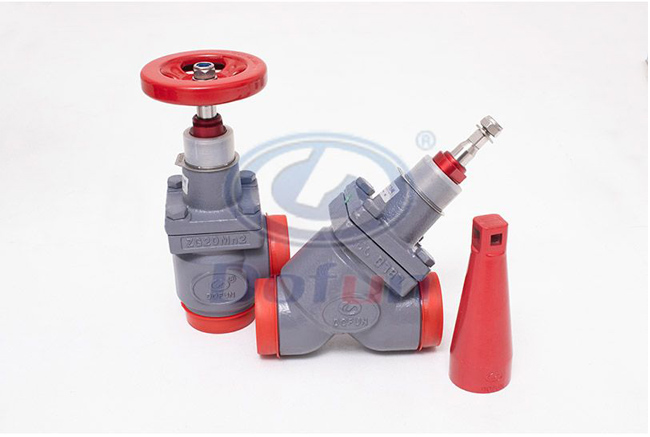Control valves are used to regulate process parameters such as media flow, pressure, temperature, and liquid level in the field of industrial automation process control. According to the control signal in the automation system, the valve automatically adjusts the valve opening, so as to achieve the media flow, pressure, temperature, and liquid level adjustment.
1. The pressure resistance level, temperature range, and corrosion resistance of the valve body and the material should not be lower than the requirements of the material of the process connection piping. Preference should be given to the manufacturer's stereotyped products. In general, cast steel or forged steel valve body is selected.
Water vapor or wet gas containing more water and flammable fluids, cast iron valve body should not be selected.
3. Ambient temperature below -20℃ should not be selected cast iron valve body.
The inner parts of the valve should be able to resist corrosion, fluid erosion, and cavitation damage to the inner parts of the valve when the fluid is throttled to produce cavitation and flashing.

1. Non-corrosive fluids generally choose 1Crl8Ni9, 1Crl8Ni9Ti, or other stainless steel.
2.Corrosive fluids should be based on the type of fluid, concentration, temperature, and pressure of different, as well as a fluid containing oxidants, different flow rates to choose the appropriate corrosion-resistant materials.
Commonly used corrosion-resistant materials are 1Crl8Ni9Ti, 0Crl8Nil2M02Ti, 20 # alloy, Hastelloy, and titanium steel.
3.For the flow rate, erosion of serious conditions should be selected to wear-resistant materials. For example, 9Crl8 and 17-7PH after heat treatment and chromium-molybdenum steel and G6X with a tight oxide layer, toughness, and high fatigue strength should be used.
4. Material selection for severe wear applications
In the case of flashing, cavitation, and particle-containing fluids, the spool and seat should be surface-hardened.
When the fluid temperature is too high and the differential pressure is too large, the spool and seat should be surface-hardened. When the fluid temperature is too high and the pressure differential is too large, the spool and seat should be surface-hardened.
1. Used to overcome the friction or the need to increase the speed of action of the control valve.
2. The occasion when the range control and regulating valve needs to change the form of air open, air close.
3. Need to change the regulating flow characteristics of the occasion.
4 regulator proportional band is very wide, but the valve is required to respond to a small signal.
5. When the springless actuator or piston actuator is to realize proportional action.
When the actuator operates a non-standard spring (spring range other than 20 to 100 kPa) with a standard signal.
The above information is provided by the control valve supplier.